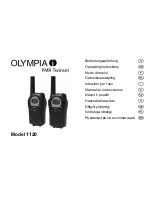
MM-010019-001, Rev. B
43
Do not share the control head’s fuse with any other device. Doing so can cause excess
current to flow through the fuse, causing it to blow unnecessarily.
4.
At the Fuse Distribution Rail Assembly near the radio, cut the red wire to the required length, strip it,
and connect it to the load-side of the Fuse Block that has the 5-amp ATC fuse. (This fuse was
installed during the rail assembly installation procedure presented in Section 8.2.2.) See the
illustration on page 36 and the following CAUTION.
CAUTION
The fuse for the control head is rated at 5 amperes. Installing the wrong fuse value
could lead to damage. Verify the control head is wired to the 5-amp (tan color) ATC
fuse! The 15-amp (blue color) ATC fuse must
not
be used for control head power; it
can be returned to stock or stored as a spare for the radio.
5.
At the back of the control head, locate a nearby section of vehicle chassis ground and strip this area of
any paint or dirt to expose a bare metal surface.
6.
Cut the black wire of the control head’s DC Power Cable as short as possible, but long enough for a
service loop, then strip it and crimp a 3/8-inch ring terminal to it.
7.
Drill a hole as necessary and screw this ring terminal to chassis ground. Use a self-threading screw or
other appropriate hardware to ensure a reliable metal-to-metal contact.
9.4.2
Connect DC Power Cable’s White Wire
A review of the information presented in Section 8.1 (page 30) may be beneficial at this time. As
required per the chosen power-up configuration, connect the white wire by following one of the
three procedures presented in the respective sub-section that follows.
The control head’s DC Power
Cable and associated fuse and wire terminal devices are shown in Figure 9-8.
Only the control head’s white wire must be connected to the ignition or switched
power sense. When this vehicle line is asserted (i.e., power switched on), the control
head automatically powers-up the radio via the CAN connection.
















































